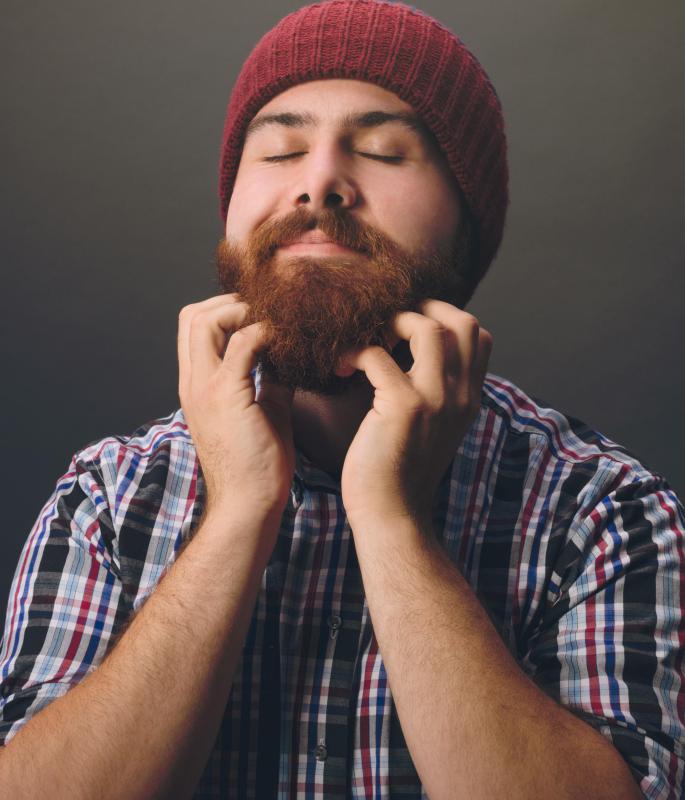At WiseGEEK, we're committed to delivering accurate, trustworthy information. Our expert-authored content is rigorously fact-checked and sourced from credible authorities. Discover how we uphold the highest standards in providing you with reliable knowledge.
What is Alopecia Barbae?
Alopecia barbae is a subtype of alopecia areata, which is an autoimmune disease that causes hair loss. Different types of alopecia areata are identified according to which part of the body the condition appears to affect. Specifically, alopecia barbae is when beard hair loss is experienced.
This type of spot baldness is not a symptom of any other disease or disorder. As an autoimmune disease, it occurs because the immune system has mistaken hair growing in the beard as an invading organism and has decided to attack the hair follicles in order to protect the body from this misidentified intruder. Alopecia barbae is not contagious and is not a painful condition. In some cases, hair will eventually begin to grow in the area where it was lost with or without treatment.

As one of the most common causes of hair loss, most cases of alopecia areata involve spot baldness in the scalp. Anyone can develop alopecia areata at any age, but the alopecia barbae subtype is most often found in adult men. Other subtypes of this condition may affect other parts of the body, however, such as the hairline outlining the scalp and the pubic areas.

Scientists who study hair loss are not sure why alopecia barbae affects some men and not others. There are some who believe it is stress-related, while others shun this idea entirely. There is also research to suggest that some men may have a genetic predisposition to developing alopecia barbae or that environmental toxins, allergens, hormonal changes, as well as a fungal or viral infection may also contribute to the onset of beard hair loss in adult men.

When alopecia does occur, the onset of spot baldness is usually sudden and unexpected. It is not usually accompanied by pain, scarring or any other physical symptoms beyond beard hair loss, although some do report feeling a slight itching sensation or spotting redness in the area when the condition initially develops. Like other autoimmune diseases, inflammation beneath the surface of hair follicles does occur, but it is rarely ever visible on top of the skin.
After alopecia barbae has resulted in facial hair loss, what remains is a small patch of bare, smooth skin. In some men, these patches are temporary and, as inflammation beneath the skin’s surface subsides, the hair missing from the beard begins a process of regrowth. In some men, alopecia barbae is recurring. In men who experience this as a recurring condition, areas of hair loss may become larger each time the condition occurs.
AS FEATURED ON:
AS FEATURED ON:













Discuss this Article
Post your comments